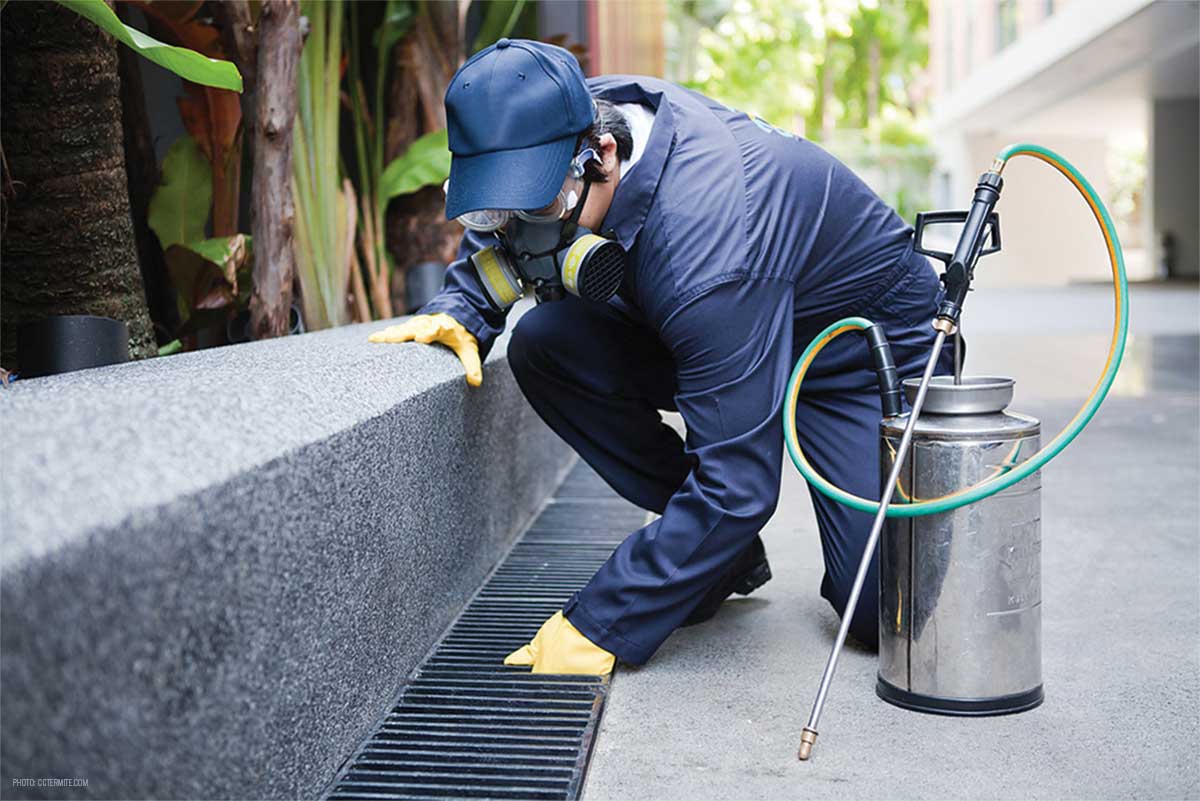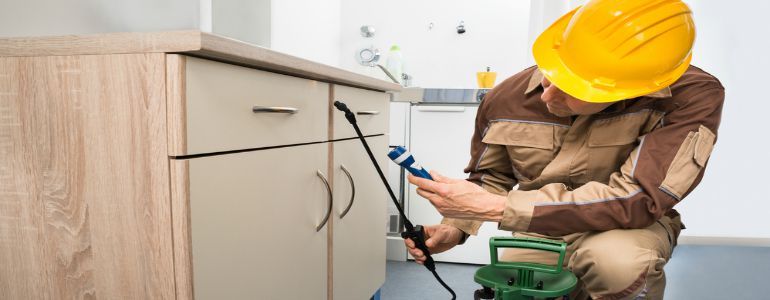Trusted Pest Control Near Me: Quick and Reliable Solutions!
Trusted Pest Control Near Me: Quick and Reliable Solutions!
Blog Article
Professional Parasite Control Techniques for Long-Term Outcomes
Specialist pest control techniques envelop a comprehensive approach that starts with an extensive evaluation and analysis, complied with by exact pest recognition to understand their habits patterns. The application of Integrated Pest Management (IPM) concepts, combined with eco-conscious treatments, creates the cornerstone of lasting bug obliteration.
Inspection and Evaluation
Upon going into a home for parasite control solutions, the initial action is a detailed inspection and evaluation to determine the level of the problem and figure out one of the most efficient treatment plan. Professional bug control technicians are trained to carefully check out the premises, seeking indicators of parasite task such as droppings, nibble marks, nests, or any kind of structural damages. They will certainly likewise assess the conditions that might be attracting pests, such as food resources, water leaks, or access factors.

Insect Identification and Behavior

Moreover, recognizing the actions of the recognized insect is crucial to implementing reliable control measures. Recognizing where parasites nest, what they feed on, and their task patterns can help pest control experts design techniques to eliminate them efficiently. Some insects may be nighttime, while others are much more active throughout the day. This knowledge permits the application of treatments at ideal times for maximum performance.
Integrated Insect Monitoring (IPM)
Integrated Insect Administration (IPM) approaches combine several strategies to regulate and protect against insect problems in a lasting and eco friendly way. bed bug treatment. By integrating approaches such as biological control, habitat manipulation, modification of social techniques, and using resistant varieties, read what he said IPM intends to minimize using chemical pesticides
Among the vital concepts of IPM is the emphasis on avoidance. This proactive approach includes monitoring pest populaces consistently to identify any type of prospective issues before they intensify. By recognizing pest problems beforehand, pest control measures can be implemented quickly and properly.
Furthermore, IPM advertises making use of safe bug control methods whenever possible. This can include using all-natural killers of the parasites, presenting advantageous pests, or using pheromones to interfere with mating patterns. By minimizing dependence on chemical pesticides, IPM not only protects the environment but likewise aids keep an equilibrium in the ecological community.
Environmentally-Friendly Treatments
Applying eco-conscious methods in bug control procedures can effectively resolve infestations while focusing on environmental sustainability. Environmentally-friendly treatments concentrate on decreasing the effect of insect control techniques on ecosystems, non-target organisms, and human health and wellness. These approaches often include making use of all-natural killers, such as ladybugs or nematodes, to manage pest populaces, lowering the requirement for chemical interventions. In addition, strategies like habitat control, such as changing wetness levels or getting rid of food sources, can assist deter pests without the usage of hazardous materials.
One more trick aspect of environmentally-friendly therapies is using natural and naturally degradable products that break down promptly Click This Link without leaving dangerous deposits in the atmosphere. Botanical pesticides stemmed from plants like chrysanthemums or neem use effective bug control while posing marginal danger to non-target types. Using approaches like warmth treatments or scent traps can target specific pests with precision, decreasing the total environmental effect of bug control practices.
Recurring Monitoring and Maintenance
Constant surveillance and upkeep are important elements of efficient parasite control administration. Ongoing surveillance plays a critical role in making sure that pest infestations are found early and handled promptly. Regular evaluations by qualified experts are required to identify any type of indicators of bug task, analyze the performance of previous therapies, and make adjustments to the bug control strategy as required. By monitoring insect populations gradually, parasite control professionals can track fads, anticipate potential problems, and implement safety nets to decrease the danger of future problems.
In enhancement to surveillance, upkeep techniques are crucial for lasting pest control success. This consists of implementing correct hygiene procedures to remove possible food and water sources for bugs, securing off entry points to stop parasites from getting in the properties, and addressing any kind of structural concerns that could promote bug invasions (bed bug treatment). By integrating continuous monitoring and maintenance into an incorporated parasite administration method, organizations can make sure a pest-free atmosphere and protect their residential property against expensive damages and health threats
Conclusion
To conclude, making use of professional parasite control methods such as detailed examination and assessment, accurate parasite identification and understanding of their actions, incorporated pest administration approaches, environmentally-friendly treatments, and ongoing monitoring click to read and maintenance are necessary for achieving long-term lead to insect control. By applying these methods, people can efficiently take care of parasite invasions and preserve a pest-free environment in a sustainable way.
Report this page